| Further north from the Iroquois Point lighthouse we
found the Tahquamenon Falls. These are the lower falls. A 4km path links the
upper and lower falls but there is road access to both. Admittedly you have
to go 14 miles from the main road to reach the falls. This is an isolated
part of Michigan, almost the most northern part of the US (apart from
Alaska). | 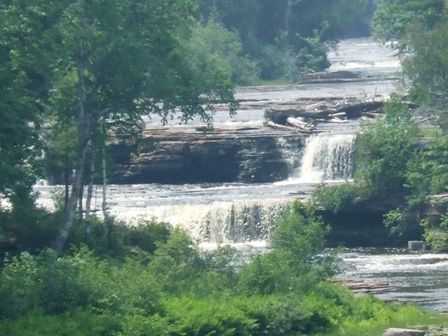 |
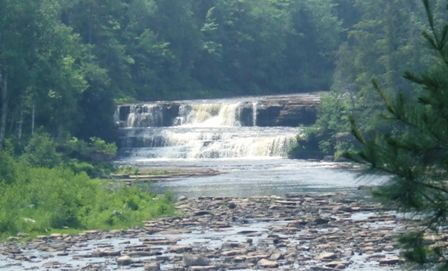 |
There is a meter in the river which measures the flow. Today it was only
about 2600 gals/sec. This is only about a quarter of what would be normal at
this time of the year. The highest flow ever measured (in 1960) is over 52,000
gallons. We were
surprised to find the falls since the land seems to be so flat and there
do not seem to be hills high enough to create the falls. |
| Despite its remoteness, it is a popular place for visitors warranting the
Parks Service building walkways between the various vantage points. A lot of
this is to prevent damage to the fragile environment from thousands of
passing feet. | 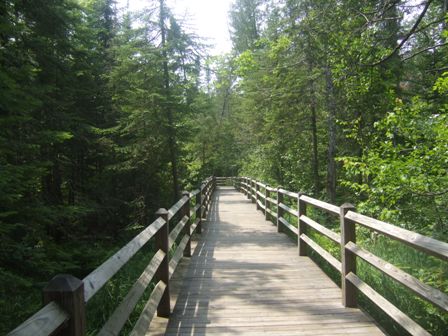 |
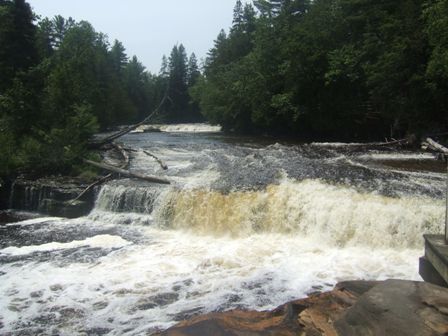 |
The brown colour in the water is actually caused by the tannins in the
decomposing cedar, hemlock and spruce trees in the watershed. The falls
don't freeze in winter because of the water flow rate. This is a small fall
just above the main upper falls. In 1883 there was a $41,000 project to
remove a waterfall and improve the water flow to assist the movement of logs
down to the lake where they would be shipped to civilisation. It also aided
with draining 30 square miles of timberland. |
| The upper falls are quite impressive, being almost
200ft wide and falling 50ft. About 214 billion gallons of water flow over
these falls every year. | 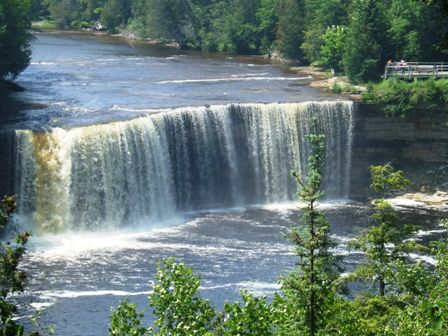 |
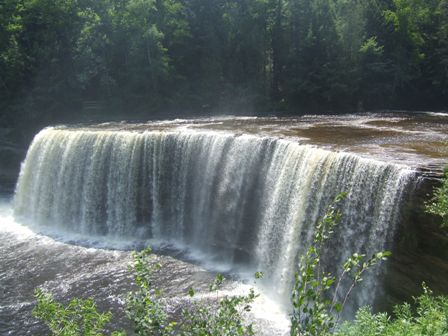 |
The water flow over the width of the falls is quite even although slightly
more goes over the far side. It is very impressive. I would like to have
seen it in full flow. |
| The water is very soft and has a pH of 7.3 which is
slightly acid. There is quite a lot of dissolve organic matter in the water
particularly lignen proteins from the woods. These are a bit like egg whites
and produce a lot of the foam seen at the base of the falls. | 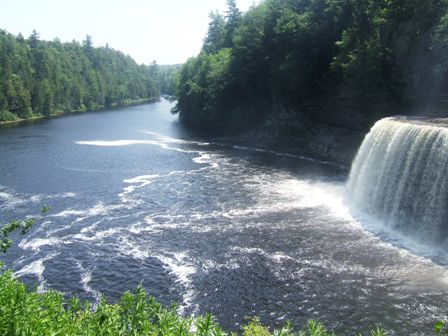 |
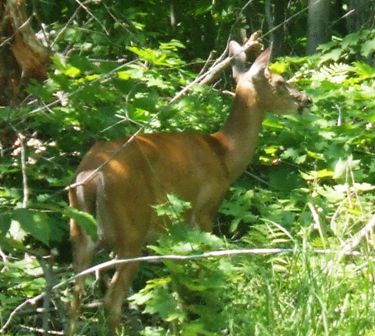 |
Although there are people visiting the falls, the wildlife like this deer
are often to be seen quite close. The park around the falls is really the
only evidence of humans for many miles in each direction. |
| There is a nasty little insect called the emerald ash
borer which is devastating the ash population. All the campsites have
notices banning the movement of firewood as they try (somewhat futilely) to
prevent the spread. The insect was imported accidentally from the far east,
and the latest ideas are to release a particular form of
wasp which comes from the same area and eats the offending insects.
Scientists are currently evaluating the risks. | 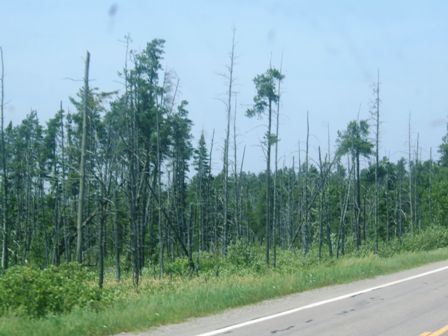 |
|